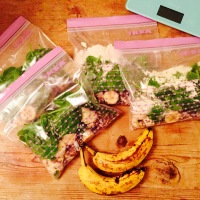If you’re living in the UK, the answer is yes (at least for the next 6 months).
If you’re someone who enjoys a couple of sun holidays each year, you might think you’re covered for vitamin D. The truth is, you’re probably not.
The basics
Vitamin D is actually a hormone, not a vitamin. It’s main role in helping the body absorb calcium, keeping bones strong, but it’s also been linked to muscle strength and immune function.
Vitamin D is made by the body when sunlight (specifically UVB rays) hits our skin. Your body can actually manufacture a huge quantity of vitamin D in a very short space of time. Under the right conditions, 10- 15 minutes of sun exposure a day is enough to keep levels in the healthy range.
Why we’re all deficient
The problem is, here in the UK we don’t get the right sort of exposure. UVB exposure (the kind you need to make vitamin D) is affected by latitude. If you live below 37 degrees north, UVB is sufficient to make vitamin D all year round – but the further away from the equator you are, the less UVB there is.
The UK lies at 50–60 degrees north, which means that from April to October, the rays aren’t strong enough for us to make vitamin D. It’s not just hearsay either – at last count, data from the National Diet and Nutrition Survey found 40 per cent of UK adults had low vitamin D levels in the winter.
Latitude isn’t the only issue – pollution, cloud cover and clothing reduce vitamin D production. And using a sun cream with an SPF of 15 blocks it almost entirely.
A healthy diet can’t help
Vitamin D is one place a healthy diet doesn’t help – small amounts of vitamin D are found in oily fish, eggs and fortified cereals, but dietary intakes only contributes about 10 per cent of what we need.
To put it into perspective, an egg yolk or a serve of fortified cereal contains around 1 microgram of vitamin D. We need 10 micrograms (mcg) a day. Unless you’re gobbling salmon fillets daily, you’re probably not getting enough from food.
Supplement advice
In July this year Public Health England (an independent body of experts who advise the government on health matters) recommended everyone over the age of one should take a vitamin D supplement during autumn and winter.
This is based on evidence that the current intakes aren’t enough to protect our bone and muscular health, and that many of us have low levels during the cold months. Since the symptoms of vitamin D deficiency are limited, the only way to know if you have sufficient levels is to get a blood test. If you’re keen to check yours you can ask your doctor. Alternatively, Birmingham based city assays offer a postal service, which is around £25.
If you’re someone who gets little sun exposure – whether that’s because you prefer to cover up, or spend a lot of time indoors – year round supplementation is recommended. The same is advised for people with dark skin, from African, Afro-Carribean and South Asian backgrounds, as their bodies naturally make less vitamin D.
How much do I need?
To keep levels in the healthy range, 10 micrograms (mcg) of vitamin D a day is recommended – and the advice is to take this as a supplement during the autumn and winter – from October through April.
You can buy vitamin D over the counter from a pharmacy, or in the supermarket. A three month supply will cost you around £2.10 – a small price to pay for safeguarding your bone health.
As always, don’t assume more is better – taking mega doses can be harmful, and around 1% of people tested have dangerous levels due to over-supplementation. Up to 25 micrograms (mcg) is generally considered safe.
Questions? E-mail or tweet me…









